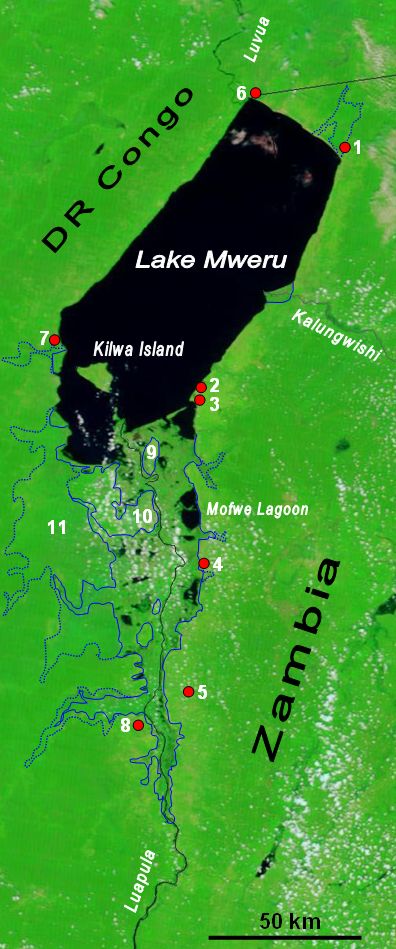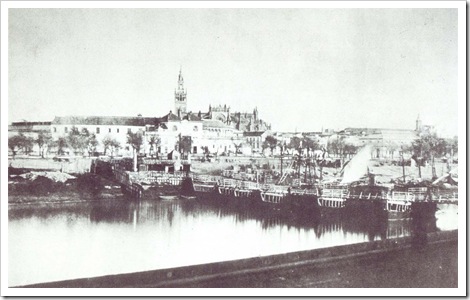|
Kalungwishi River
The Kalungwishi River flows west in northern Zambia into Lake Mweru. It is known for its waterfall A waterfall is any point in a river or stream where water flows over a vertical drop or a series of steep drops. Waterfalls also occur where meltwater drops over the edge of a tabular iceberg or ice shelf. Waterfalls can be formed in seve ...s, including the Lumangwe Falls, Kabweluma Falls, Kundabwika Falls and Mumbuluma Falls. There are plans to build two hydro power plants on the Kundabwika and kabwelume falls. This has not pleased everyone as some feel the beauty of the water falls will be disturbed. The Kalungwishi pontoon on the Kawambwa- Mporokoso road above Lumangwe Falls was replaced by a new bridge in 2004. Location References Rivers of Zambia Lake Mweru {{Zambia-river-stub ... [...More Info...] [...Related Items...] OR: [Wikipedia] [Google] [Baidu] |
Zambia
Zambia, officially the Republic of Zambia, is a landlocked country at the crossroads of Central Africa, Central, Southern Africa, Southern and East Africa. It is typically referred to being in South-Central Africa or Southern Africa. It is bordered to the north by the Democratic Republic of the Congo, Tanzania to the north-east, Malawi to the east, Mozambique to the southeast, Zimbabwe and Botswana to the south, Namibia to the southwest, and Angola to the west. The capital city of Zambia is Lusaka, located in the south-central part of Zambia. The population is concentrated mainly around Lusaka in the south and the Copperbelt Province to the north, the core economic hubs of the country. Originally inhabited by Khoisan peoples, the region was affected by the Bantu expansion of the thirteenth century. Following European colonization of Africa, European colonisers in the 18th century, the British colonised the region into the British protectorates of Barotziland–North-Western Rho ... [...More Info...] [...Related Items...] OR: [Wikipedia] [Google] [Baidu] |
Lake Mweru
Lake Mweru (also spelled ''Mwelu'', ''Mwero'') (, ) is a freshwater lake on the longest arm of Africa's second-longest river, the Congo. Located on the border between Zambia and Democratic Republic of the Congo, it makes up of the total length of the Congo, lying between its Luapula River (upstream) and Luvua River (downstream) segments.Google Earth accessed 29 March 2007. When in flood Lake Bangweulu and its swamps may temporarily have a larger area, but not a larger volume. Mweru means 'lake' in a number of Bantu languages, so it is often referred to as just 'Mweru'.The '' Northern Rhodesia Journal'' online at NZRAM.org: J B W Anderson: "Kilwa Island and the Luapula." Vol II, No. 3 pp87–88 (1954) Physical geography Mweru is mainly fed by the Luapula River, which comes in through swamps from the south, and the Kalungwishi River from the east. At its north end the lake is drained by the Luvua River, which flows in a northwesterly direction to join the Lualaba River and th ... [...More Info...] [...Related Items...] OR: [Wikipedia] [Google] [Baidu] |
Waterfall
A waterfall is any point in a river or stream where water flows over a vertical drop or a series of steep drops. Waterfalls also occur where meltwater drops over the edge of a tabular iceberg or ice shelf. Waterfalls can be formed in several ways, but the most common method of formation is that a river courses over a top layer of resistant bedrock before falling onto softer rock, which erodes faster, leading to an increasingly high fall. Waterfalls have been studied for their impact on species living in and around them. Humans have had a distinct relationship with waterfalls since prehistory, travelling to see them, exploring and naming them. They can present formidable barriers to navigation along rivers. Waterfalls are religious sites in many cultures. Since the 18th century, they have received increased attention as tourist destinations, sources of hydropower, andparticularly since the mid-20th centuryas subjects of research. Definition and terminology A waterfal ... [...More Info...] [...Related Items...] OR: [Wikipedia] [Google] [Baidu] |
Lumangwe Falls
Lumangwe Falls on the Kalungwishi River in northern Zambia is the largest waterfall wholly within the country, with a height of 30-40 m and a width of 100-160 m. It is a block-type waterfall located between the Luapula and Northern Provinces. The main bedrock is interbedded quartzite with layers of red siltstone. The falls are 80 km from Mporokoso on the Kawambwa road. It has a similar depth of water falling over the edge to the Victoria Falls (Mosi-oa-Tunya) on the Zambezi for which it is frequently mistaken in photographs. Lumangwe Falls forms part of the Lumangwe Falls / Kabwelume Falls / Chimpepe Falls Complex, a national monument in Zambia. At the river's height at the end of the rainy season in April / May, spray from the waterfall may be carried 100 m into the air and the roaring sound in the gorge below seems to shake the ground. Lumangwe Falls are reached via a 10 km earth road which turns west from the Kawambwa-Mporokoso gravel road, 2.5 km north-east of the Kalungwis ... [...More Info...] [...Related Items...] OR: [Wikipedia] [Google] [Baidu] |
Kabweluma Falls
Kabwelume Falls is a waterfall on the Kalungwishi River in the Northern Province, Zambia, Northern Province of Zambia. The falls is about 6 km down stream of Lumangwe Falls. When viewed at peak water volume (April/May), a month after the wet season, the falls makes a spectacular semi circle of falling water. There are plans to build a hydro power station on this falls. See also * List of waterfalls * List of waterfalls of Zambia References Waterfalls of Zambia Geography of Northern Province, Zambia {{Zambia-geo-stub ... [...More Info...] [...Related Items...] OR: [Wikipedia] [Google] [Baidu] |
Mumbuluma Falls
Mumbuluma Falls are a set of waterfalls just outside Mansa, Zambia in the Luapula Province. The waterfalls are a national monument of Zambia. Mumbuluma Falls is made up of two waterfalls occurring in succession, an upper and lower falls. See also * List of waterfalls * List of waterfalls of Zambia This is a list of waterfalls in Zambia. See also * List of waterfalls * Tourism in Zambia {{Africa topic, List of waterfalls of * Zambia Waterfalls A waterfall is any point in a river or stream where water flows over a vertical drop or a ... References External links Satellite view via Google MapsPhoto gallery of Mumbuluma Falls Waterfalls of Zambia Geography of Luapula Province Tourist attractions in Luapula Province {{Zambia-geo-stub ... [...More Info...] [...Related Items...] OR: [Wikipedia] [Google] [Baidu] |
Hydroelectricity
Hydroelectricity, or hydroelectric power, is Electricity generation, electricity generated from hydropower (water power). Hydropower supplies 15% of the world's electricity, almost 4,210 TWh in 2023, which is more than all other Renewable energy, renewable sources combined and also more than nuclear power. Hydropower can provide large amounts of Low-carbon power, low-carbon electricity on demand, making it a key element for creating secure and clean electricity supply systems. A hydroelectric power station that has a dam and reservoir is a flexible source, since the amount of electricity produced can be increased or decreased in seconds or minutes in response to varying electricity demand. Once a hydroelectric complex is constructed, it produces no direct waste, and almost always emits considerably less greenhouse gas than fossil fuel-powered energy plants. [...More Info...] [...Related Items...] OR: [Wikipedia] [Google] [Baidu] |
Pontoon Bridge
A pontoon bridge (or ponton bridge), also known as a floating bridge, is a bridge that uses float (nautical), floats or shallow-draft (hull), draft boats to support a continuous deck for pedestrian and vehicle travel. The buoyancy of the supports limits the maximum load that they can carry. Most pontoon bridges are temporary and used in wartime and civil emergencies. There are permanent pontoon bridges in civilian use that can carry highway traffic; generally, the relatively high potential for collapse and sinking (e.g. due to waves and collisions) and high continuous maintenance costs makes pontoons unattractive for most civilian construction. Permanent floating bridges are useful for sheltered water crossings if it is not considered economically feasible to suspend a bridge from anchored Pier (architecture), piers (such as in deep water). Such bridges can require a section that is elevated or can be raised or removed to allow waterborne traffic to pass. Notable permanent pontoo ... [...More Info...] [...Related Items...] OR: [Wikipedia] [Google] [Baidu] |
Kawambwa
Kawambwa is a town in the Zambian province of Luapula located on the edge of the northern Zambian plateau above the Luapula valley at an altitude of 1300 m. It was chosen as an administrative district of the same name by the British colonial authorities who preferred the climate of the plateau rather than the hotter valley where most of the district's population live, and it continues as an administrative district today. Kawambwa sits at the junction of tarred roads to Nchelenge, Mporokoso, Mushota and Mansa, and Mbereshi linking with the Zambia Way, the main tarred highway of the Luapula Province through Mwansabombwe and Mansa. Zambia's largest tea plantation is situated 27 km from Kawambwa on the Mporokoso road. A camp for refugees of war in the eastern DR Congo was established by United Nations agencies at Kala 24 km north of Kawambwa in 1998, with a capacity for 40,000 refugees. Near to Kawambwa are three of Zambia's waterfalls Lumangwe Falls, Kabwelume 5 ... [...More Info...] [...Related Items...] OR: [Wikipedia] [Google] [Baidu] |
Mporokoso
Mporokoso (also spelled and pronounced 'Mpolokoso' and 'Mumpolokoso') is a town in the Northern Province of Zambia, lying at an elevation of nearly 1500 m on the flat plateau about 75 km south east of Lake Mweru Wantipa and 100 km south-west of Lake Tanganyika. It is named for Chief Mporokoso (also spelled 'Mumpolokoso') a senior chief of the Bemba people whose palace is located at Chishamwamba close to the town. {{webarchive, url=https://web.archive.org/web/20070927224205/http://www.times.co.zm/news/viewnews.cgi?category=4&id=1056658325 , date=2007-09-27 accessed 4 February 2007 Mporokoso District is also one of the 12 of the Northern Province ... [...More Info...] [...Related Items...] OR: [Wikipedia] [Google] [Baidu] |




